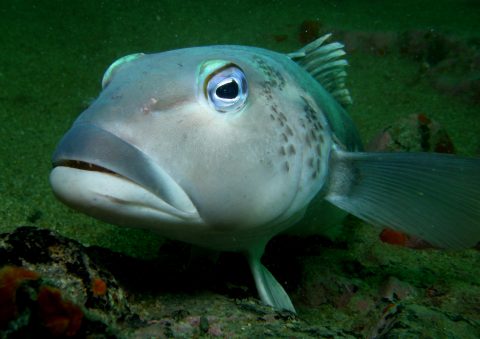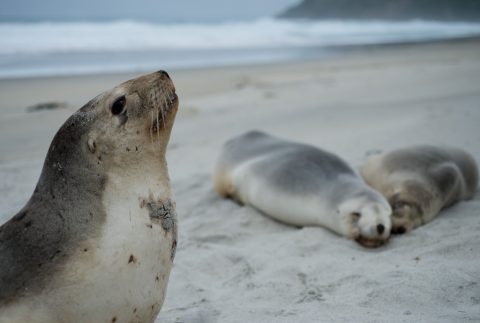Make smart seafood choices with the Best Fish Guide
You know your peaches are grown in Hawke’s Bay and your sauvignon blanc is vinted in Marlborough. But what do you know about your seafood?
For many New Zealanders the answer is not a lot. Unfortunately, a lack of consumer information means that many of us are unaware that some of the seafood we’re buying is caught in ways that harm our environment and kill our threatened and protected seabirds and marine mammals.
That’s why Forest & Bird produces the Best Fish Guide, New Zealand’s only independent consumer guide to sustainable seafood. The 2017 Guide, fully updated and available as a mobile app, is a powerful tool to help consumers choose fish species with healthy stocks, caught or farmed using methods which don’t harm the marine environment.
There has been a lot of attention this year on problems surrounding the commercial fishing industry such as the dumping of unwanted fish and the killing of marine mammals and seabirds as bycatch. The industry needs to get its act together and the Ministry of Primary Industries must do a better job of regulating it.
But as consumers we can also play a crucial role in ensuring there will always be good fish available at reasonable prices while protecting the variety of life in the oceans around us.

Blue cod is a good choice if caught by pots, but avoid if caught by trawl. Photo: Anna Barnett
The Best Fish Guide ranks more than 85 commercial fish species for their sustainability, based on criteria including stock numbers, environmental damage caused by fishing methods such as bottom trawling and the bycatch of threatened and protected species.
The guide uses a “traffic light” ranking system. The most sustainable choices are given a green ranking and the rankings move through amber and orange to the red “worst choice” species.
The good news is there’s plenty of choice for Kiwis who love seafood but don’t have the option of catching their own. There are 42 choices that pass muster, including salmon, mussels, oysters and paua (all farmed), albacore and skipjack tuna, crayfish, and cockles.
For recreational fishers who want to reduce their own impacts when out on the water, take a look at Forest & Bird’s ‘Off the Hook’ guide to keeping seabirds away from bait and hooks.
For the first time, the guide includes regional differences as well as fishing method differences. For example, arrow squid caught by trawling is a “worst choice” because of the bycatch of critically threatened New Zealand sea lions, but arrow squid caught by jigging is an “OK choice”.
This year’s guide also includes freshwater species, whitebait and longfin eels for the first time. Both are given red “worst choice” rankings due to declines in their populations.
Four of the five species of juvenile native fish which make up whitebait are threatened with extinction. While habitat degradation is the main cause of these declines, whitebaiting has also had an effect and Forest & Bird believes threatened species should not be commercially exploited.

NZ sea lions, the world’s most endangered sea lions, are killed as bycatch in the squid trawl fishery. Photo: Craig McKenzie
The peer reviewed guide uses rigorous scientific methodology. Our scientists used the most recent data from the Ministry for Primary Industries to compile the ecological assessments.
This is what sets the Best Fish Guide apart from other seafood assessment schemes.
Recently orange roughy was given a sustainability accreditation by the Marine Stewardship Council. This is in contrast to Forest and Bird’s assessment, which places orange roughy in the red category. This is because orange roughy is a long-lived, late-breeding species which is vulnerable to overfishing, and bottom trawling for orange roughy destroys sensitive habitats and ancient protected corals.
Forest & Bird has criticised Marine Stewardship Council accreditations in the past, including that for hoki which again rates poorly in the Best Fish Guide.

Consumers can create industry change by asking where and how their seafood was caught. Photo: Caroline Wood
New Zealand’s favourite fish, snapper, is currently in the red “worst choice” category because of depleted stock numbers and the bycatch of threatened seabirds. However, the longline fishery has been working to reduce seabird bycatch and snapper is likely to move out of the red category by the time of the next Best Fish Guide.
For the system to work really well, supermarkets and other fish retailers need to provide shoppers with information on where fish was caught and by what method to ensure consumers can make the most sustainable choices.
We encourage consumers to keep asking these questions. There are plenty of alternatives to the worst choices. We have power in our hands as fishing companies will respond to shifts in consumer demand.
Download the Best Fish Guide mobile app here
Kevin Hague’s column featured as an op ed in the NZ Herald on Friday 20 January
